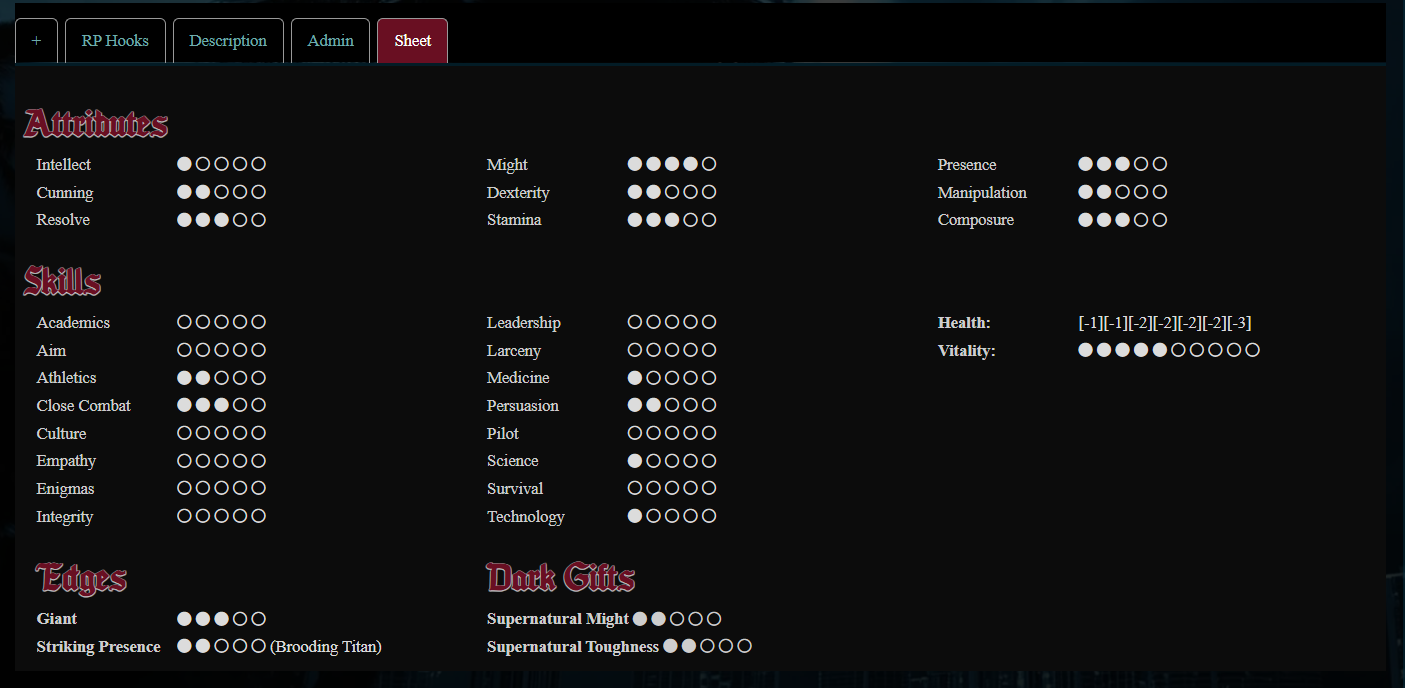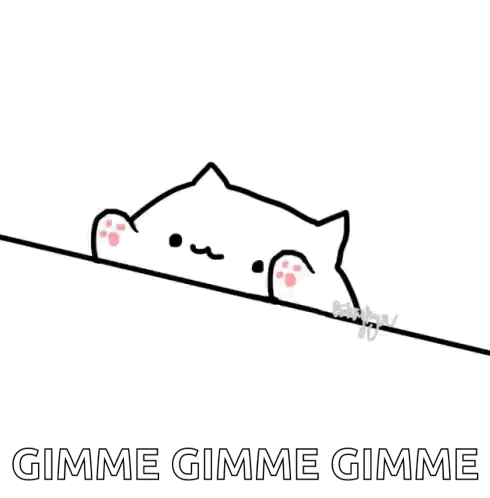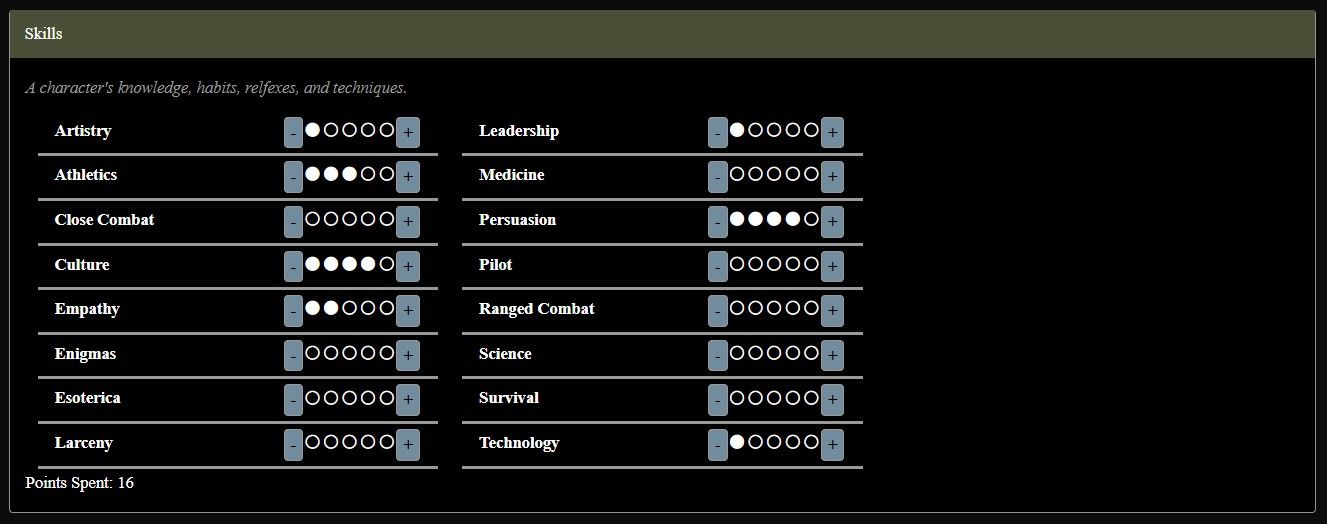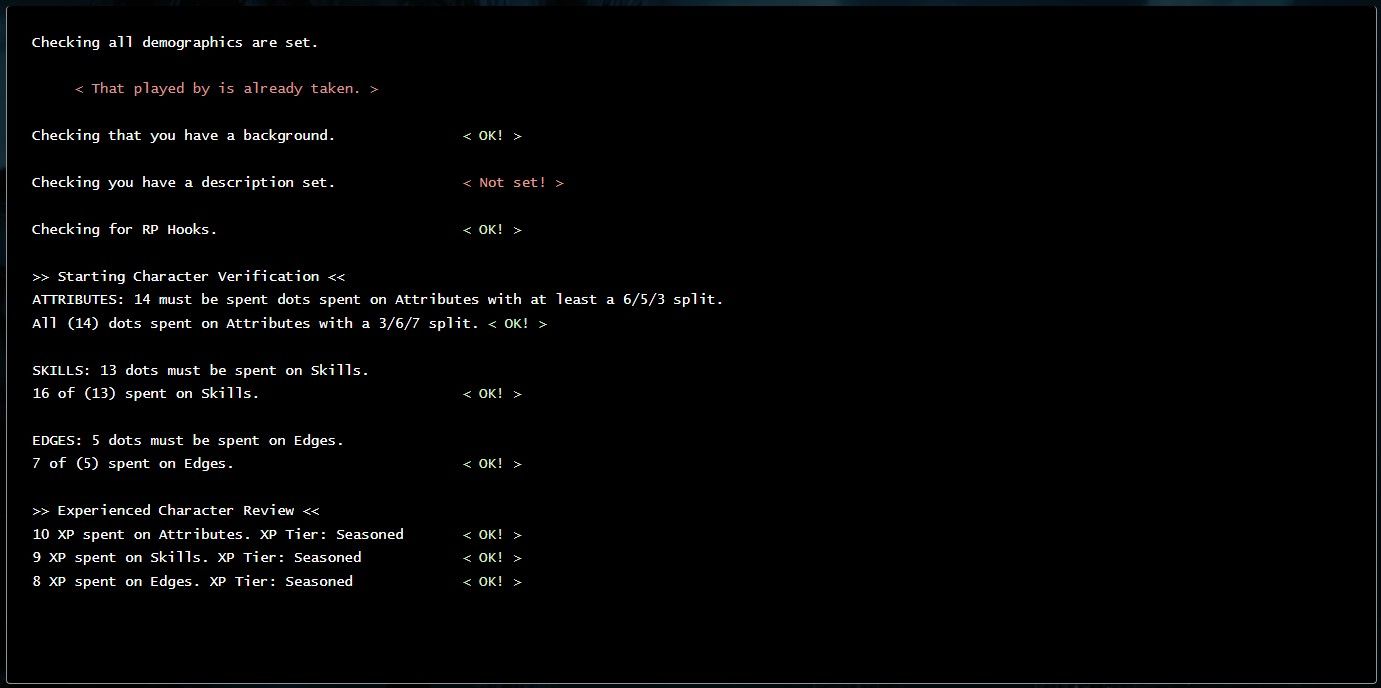Game Development: Modern Gothic Storypath System
-
@Raistlin said in Game Development: Modern Gothic Storypath System:
It’s one of my all-time favorite movies.
Same. I’ve just never been able to figure out how to make the plot something you can touch; it’s a fun concept to fool around with, but people would eventually have to “awaken” and then the setting quickly unravels (see the metaplot thread).
Anyway! Supernatural horror is my jam, so I’m looking forward to seeing your game in production.
Good luck!


-
A first draft of a “path” for the game. One of the beta testers wanted to play a golem-type creature. Here is The Reanimated.
The Reanimated are beings caught between life and death, powered by a mysterious vitality that defies natural law. Some are patchwork creatures sewn together from various corpses, others are single bodies reanimated through electricity and forbidden magic, and a few are artificial forms given a semblance of life through occult science. Unlike other supernatural beings who maintain some connection to their original nature, the Reanimated are fundamentally artificial.
Their unnatural existence requires constant maintenance and their vitality must be regularly recharged through exposure to electrical or occult power sources. While this grants them remarkable resilience and strength, it also makes them dependent on those with the knowledge to maintain their unique physiology. Animals instinctively fear them, and even humans feel subtly unsettled in their presence, leading many Reanimated to seek out others of their kind or form close bonds with the few who accept them.
Skills
Medicine, Science, Survival
Base Attributes
3 Mental, 6 Physical, 5 Social
Special
Reanimated beings gain Vitality Points equal to Stamina + 2. Vitality Points are spent to:
- Power supernatural abilities
- Repair damage (1 point per Injury Level)
- Maintain consciousness when grievously wounded
Vitality Points replenish when the character rests near a source of electrical/occult power.
Supernatural Benefits
- Natural armor (2 levels)
- Cannot die from normal wounds (must be completely destroyed)
- Immune to disease, poison, and aging
- May spend 1 Vitality Point to gain 1 Durability Advantage for one turn
Supernatural Weaknesses
Patchwork Construction
- Takes double damage from electricity and fire
- Must make a Stamina roll (difficulty 2) when attempting fine motor tasks or gain Confused status effect
- Must have regular “maintenance” performed by someone with Medicine or Science skill or begin to deteriorate
Occult Dependencies
- Must recharge Vitality Points through electrical/occult sources
- Cannot heal naturally - requires “repairs” using Medicine or Science
- Each day spent without maintenance increases difficulty of all Physical actions by 1
Unnatural Presence
- Animals instinctively fear/hate the character
- Must make Resolve roll (difficulty 2) when dealing with terrified reactions or gain Crestfallen status
- Social rolls against strangers have +1 difficulty unless deliberately attempting to intimidate
This Path emphasizes physical power and resilience while including drawbacks that reflect both the character’s artificial nature and need for maintenance. The Vitality Point system represents their need to regularly “recharge” and maintain their unnatural existence.
-
The first round of character generation went well. No hiccups. Got some notes that I’ll work on over the next day or so. Looks good, though. I’m pretty pleased. Thought I’d attach an image of what the character sheet looks like via the web portal.

-

-
Things have been a bit rough this last week since my cat passed away. We’re trying to get back to normal routines, though, and part of that for me is working on Dark City. I thought I’d share some screenshots of character generation. CG is mostly done though I’m making minor tweaks based on feedback from my beta testers.



-
For those who have been following, progress continues, but it’s slow. I might try doing an invite-only soft/beta open. Start slow and see how things go.
-
I wanted to share an update on the game I’ve been working on. After much consideration, I’ve made some significant changes to the original concept.
While developing the Storypath system was enjoyable, it ultimately proved too ambitious. I was concerned about the learning curve for new players since, despite having familiar mechanics, everything else was homebrewed. This would have required everyone to learn an entirely new system.
Several other factors influenced my decision to pivot:
- I wasn’t confident I could properly support the original setting
- I had reservations about maintaining the WoD-lite theme long-term
The game has transformed considerably:
- The setting is now Misty Harbor, a fictional coastal town in Maine that I feel more comfortable developing
- I’ve shifted to a 1980s timeframe, drawing inspiration from properties like Stranger Things
- The theme leans more toward horror than WoD-gothic soap opera (though those elements are still present in some ways)
- I’ve adopted the Stranger Stuff system, which is simpler but very effective and narrative-focused—ideal for a MUSH environment, in my opinion
I’m still uncertain whether I’ll make the game publicly available. Horror isn’t my usual genre (I typically run Star Trek or superhero games), but the project does exist with a small player base. For now, I’m considering an invite-only approach.
For those who expressed interest in my original concept, I wanted to provide this update. If you’re curious about the new direction, feel free to message me directly or let me know if you’d like me to start a new thread about it.
Thanks for your support!
-
@Raistlin said in Game Development: Modern Gothic Storypath System:
Stranger Stuff
The TinyD6 Stranger Stuff game? That’s neat. What adjustments are you making to it to adapt it to the MU format? From when I read it last, I recall it’s meant for one shots and doesn’t really seem like it would adapt without a lot of changes.
-
@MisterBoring I created more Advantages, Drawbacks, and supernatural abilities. Other than that, not much. In my opinion, almost any system can work on a MUSH under the right circumstances.
I went with Stranger Stuff with the following ideas in mind:
- Minimal advancement. Players aren’t hoarding XP and slowly (or not so slowly) growing their character sheet to super-heroic proportions. Your character is what it is when you create it. Over time, as RP dictates, you can apply for changes to your sheet, but there’s not really any advancement.
As an aside, this is one of the things I really enjoy about the Star Trek RPG. You’re not gunning for advancement and XP. Your character is your character, fully formed and at the peak of their abilities. Changes that do happen are often lateral instead of upwards.
-
I wanted something that you could use without even thinking about numbers. One of the cool things about Stranger Stuff is that it’s trait-based, so a character can look something like “A local fisherman who is Athletic, Connected, Insightful, and has a Bad Back.” There are mechanical systems behind all of those traits but, even without using them, this character sheet tells you a lot about a character.
-
Fast paced. The system is fast-paced for those who choose to rely on it. There aren’t a ton of mechanics to learn or crunch to slow RP down.
And that’s it really. I wanted a system that could support RP without getting in the way of it but also one that had enough heft to be meaningful when people did want to use it. Hope that helps answer your question!
-
@Raistlin Totally does. Very cool. If I have free time (which is a luxury these days) I’ll be sure and check it out when it opens.